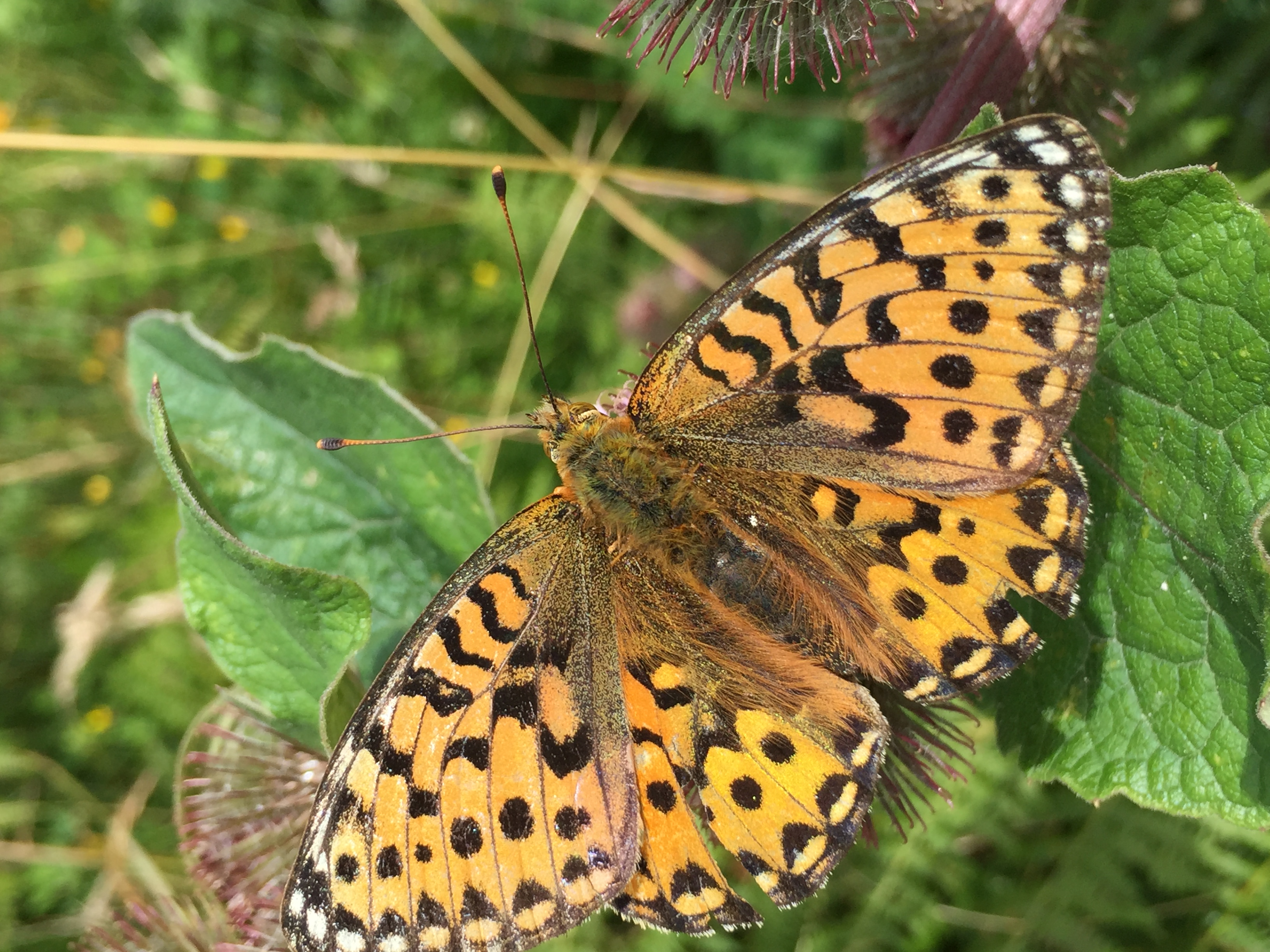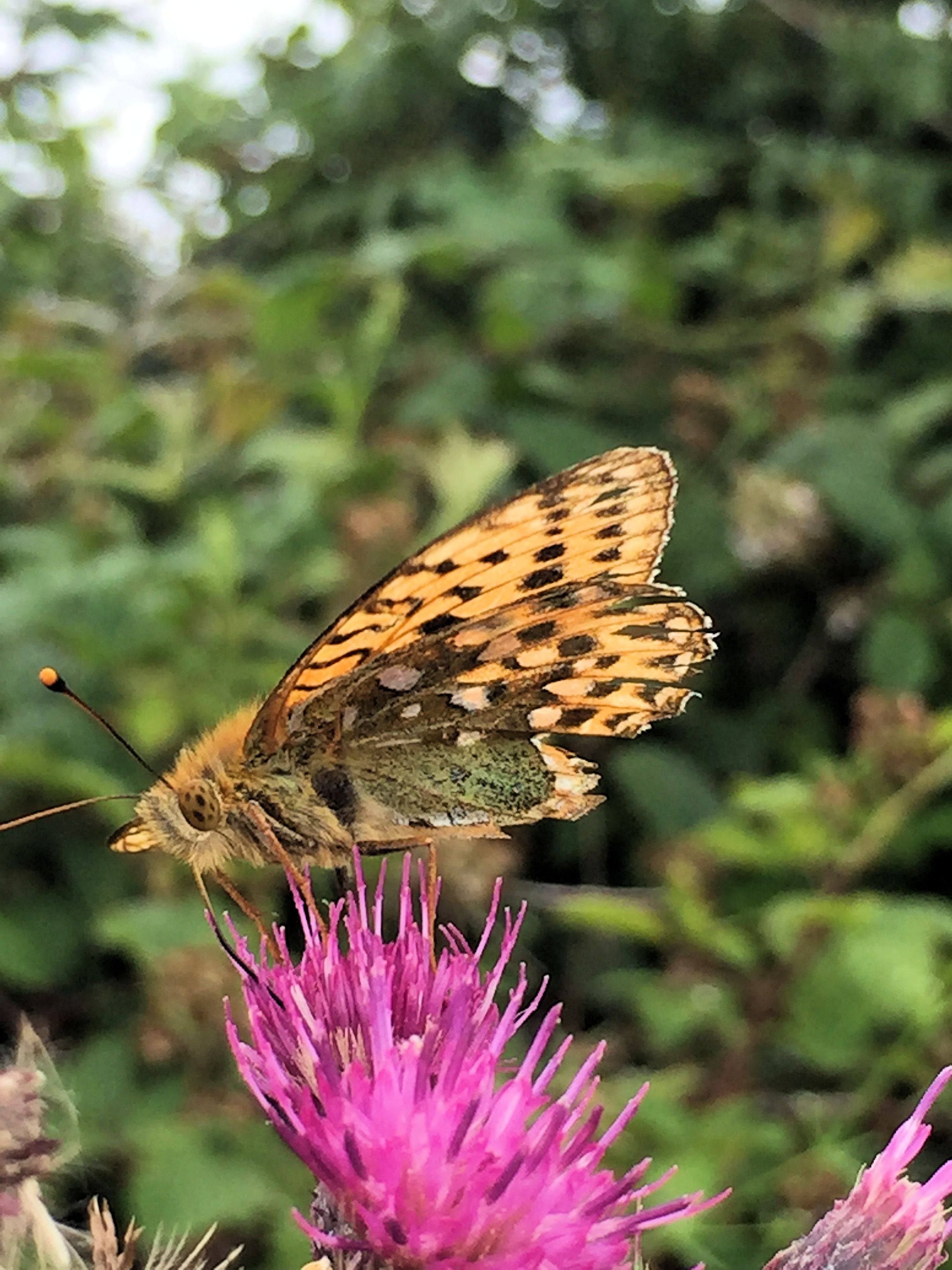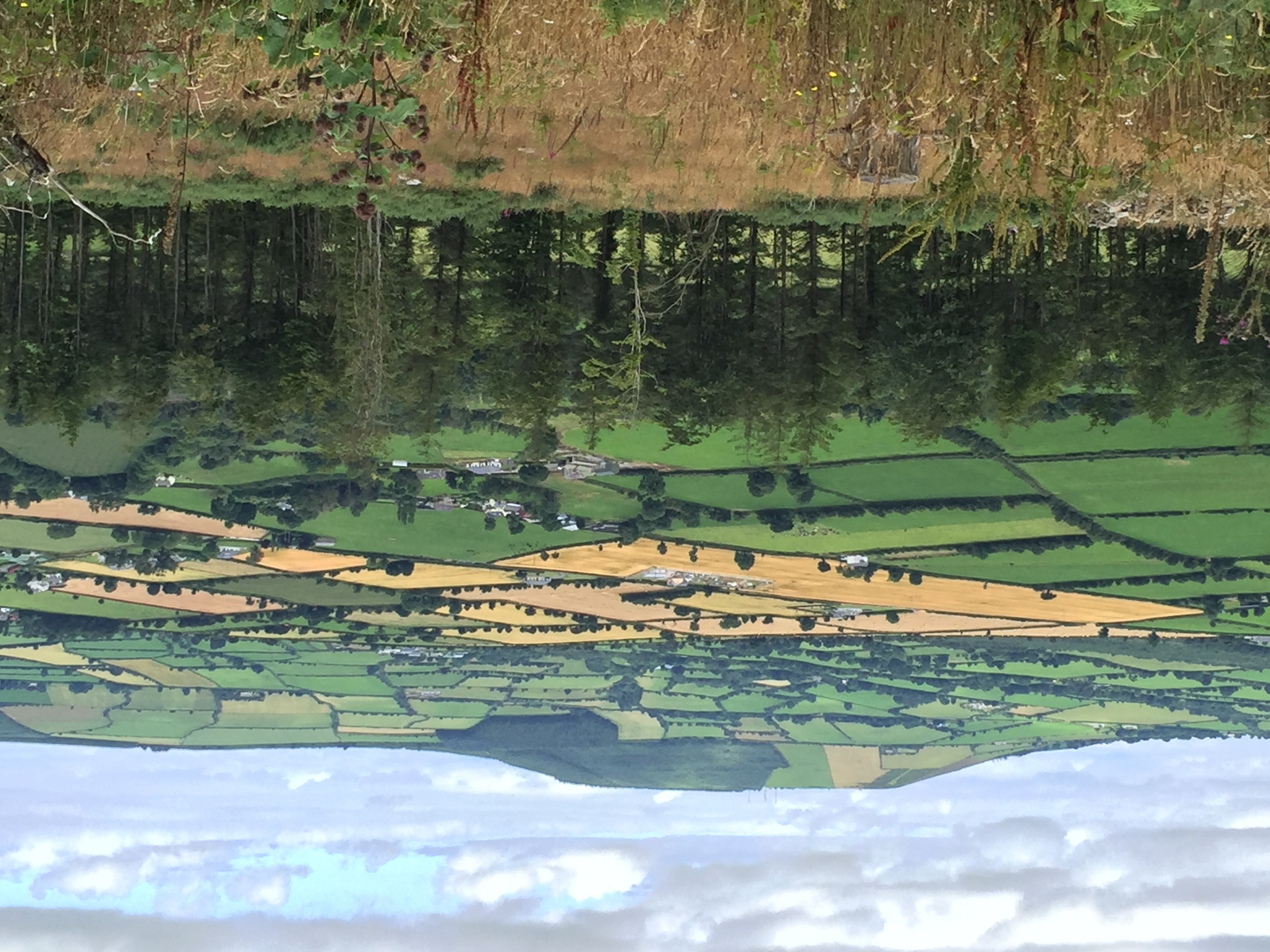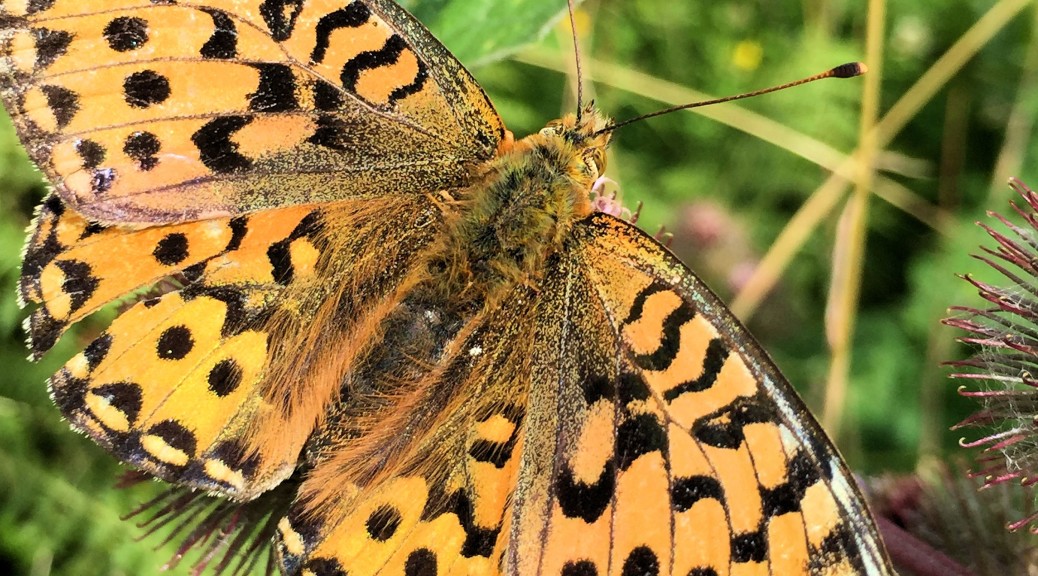
The dark-green fritillary is a large bright orange butterfly with a powerful flight. It can be difficult to separate from the similarly sized silver-washed fritillary, particularly in flight, but if you manage to see the distinctive white circles on the hind underwing you know it is a dark green fritillary. The dark green fritillary is quite a localised species in Ireland, primarily found at coastal sites where there is herb rich pastures; dune grasslands are a particular favourite habitat. It is a high summer butterfly, on the wing from June to August. The range of the dark green fritillary has contracted over the last few decades, consequently its conservation status is considered to be vulnerable. In other words, it is facing a high risk of extinction in the wild in Ireland in the medium-term future. Sadly, another bleak outlook for one of our most beautiful butterflies.

Now I am no great fan of forestry in Ireland, but perhaps I should qualify that statement. I am no great fan of commercial forestry, where non-native species are dug into our uplands, destroying peats and heaths, to produce low grade timber. However, the one benefit that this kind of forestry brings is it provides many kilometres of forest tracks which, fortunately, are open for people to hike and cycle. On a glorious sunny day, at the end of July, I took my bike to the forest paths of Brandon Hill, which stands sentinel over the picturesque village of Graiguenamanagh and the Barrow valley. Not long into my cycle, at Deerpark, I noticed a fritillary fly past and assumed it was a silver-washed fritillary. A bit further on, at Raheendonore, where the path descends steeply in a valley, I saw another. Then in a clearing I noticed there were a good number, at least a dozen, feeding on the nectar-rich thistle flowers. Image my delight when I realised these where not silver-washed fritillaries, the species you would expect in these parts, but the much more localised dark green fritillary. A new site for the species, an inland site, and one discovered completely by accident. Super!
It is this sense of discovery that I enjoy most about wildlife. I know that if I follow the path less traveled, or indeed the path well trodden, there are things to find, to discover. An interest in wildlife means I am never bored for each unfolding seasons brings its own bounty. And documenting what I find means I am helping to gain a better understanding of what wildlife we have, and sharing that knowledge with others. For, in a rapidly changing environment, if we don’t know what we have how can we ever expect to conserve it?
Speckled wood #1, Dingy skipper #2, Wall brown #3, Common blue #4, Holly blue #5, Small blue #6, Meadow brown #7, Ringlet #8, Wood white #9, Cryptic wood white #10, Orange-tip #11, Green-veined white #12, Large white #13, Small white #14, Green hairstreak #15, Marsh fritillary #16 & Dark green fritillary #17.


